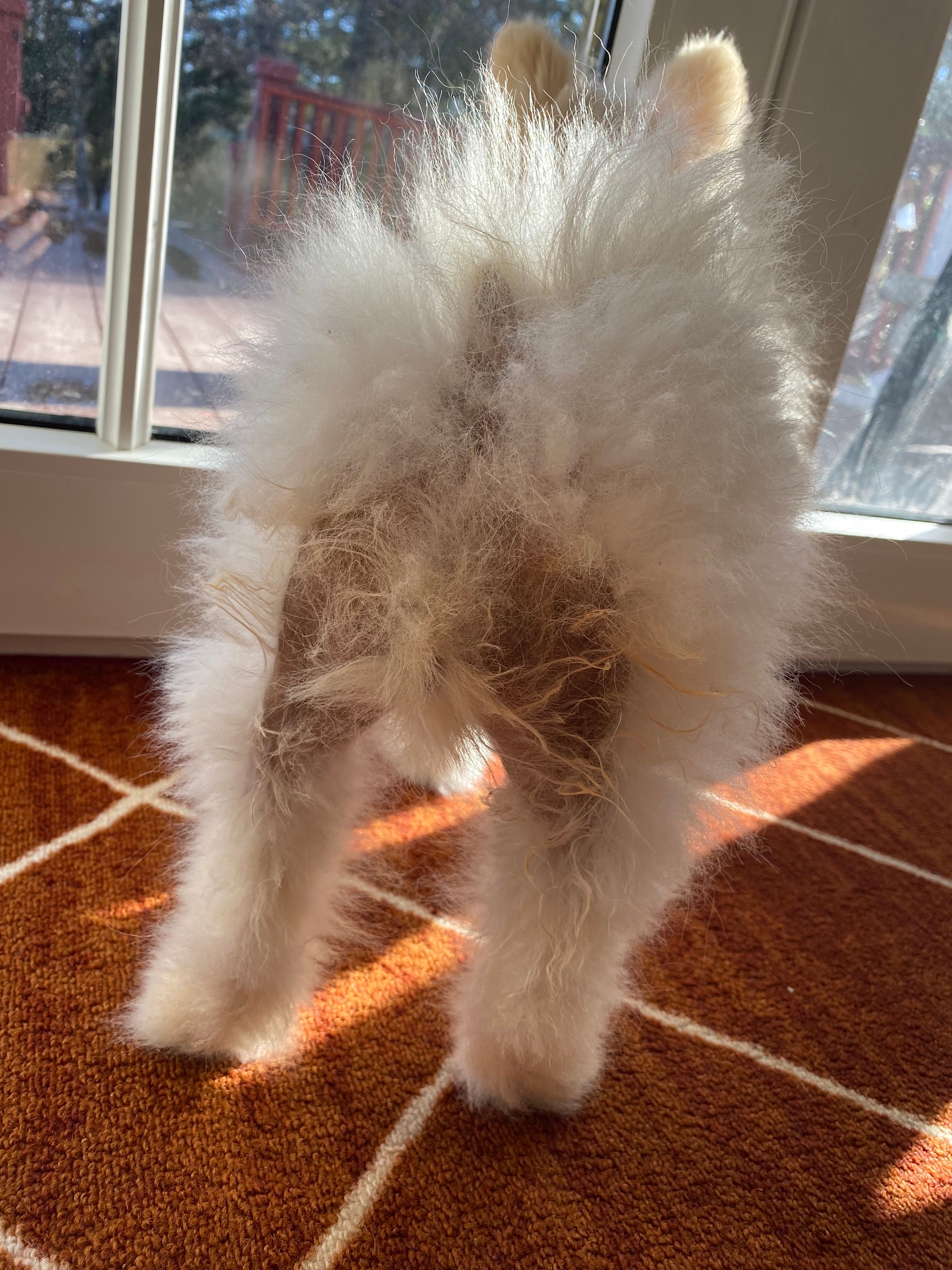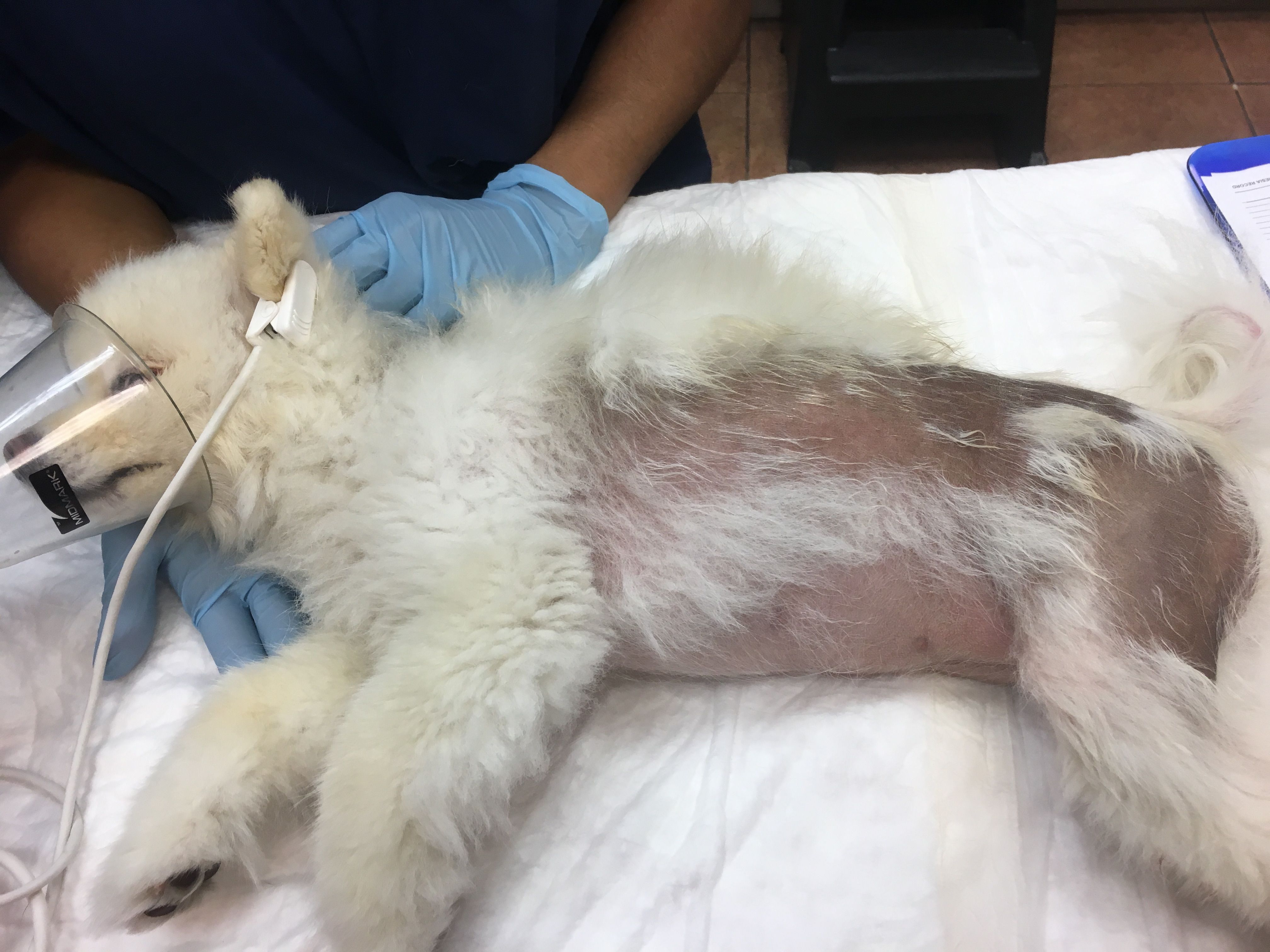Image Quiz: Hair loss in a Pomeranian puppy
Test your diagnostic skills by examining the following images and selecting the answer you think fits best.
A 2-year-old female, spayed Pomeranian had no previous history of skin disease but started losing hair at 1.5 years of age. There is no evidence of either a bacterial or yeast infection based on cytology or of pruritus associated with the skin condition. The only medication administered was oral melatonin (3 mg twice daily) for several months before presentation. What is your most likely diagnosis based on these images?
All images are courtesy of Judy Seltzer

Photo courtesy from Judy Seltzer

A. Hypothyroidism
B. Cushing’s disease
C. Alopecia X
D. Demodicosis
Answer: Alopecia X
All the answers should be on your differential diagnosis list, but the most probable cause of the lesions is alopecia X. A full history and dermatologic exam will help determine your diagnostic differentials.
Skin cytology will help rule out a bacterial or yeast infection. A deep skin scrape will rule out demodicosis. A fungal culture will rule out dermatophytosis. Baseline bloodwork will help determine whether further blood testing (e.g., thyroid panel or an adrenocorticotropic hormone stimulation [ACTH]/low-dose dexamethasone suppression test) is recommended.
The final diagnosis of alopecia X is made by ruling out all other possible diagnoses using either a biopsy or an adrenal panel (University of Tennessee). A biopsy will typically show arrest of the hair cycle, as well as a majority of telogen follicles and “flame” follicles. An adrenal panel will often show elevations in adrenal steroid intermediate compounds and/or sex hormones.
Alopecia X is a cosmetic disease that leads to a noninflammatory alopecia in adult dogs. The pathogenesis is not confirmed, but possible causes include abnormalities of adrenal steroid intermediate compounds and sex hormones. Clinical signs vary from a dull hair coat to progressive alopecia and hyperpigmentation that affects the neck, dorsum, ventrum, thighs, and tail. The head and feet are usually spared.
Affected dogs are healthy and lack signs of systemic disease. The most commonly affected breeds include Nordic breeds such as the Pomeranian, Samoyed, Alaskan malamute, Siberian husky, chow chow, and keeshond. The disease can affect dogs of either gender (may or may not be spayed/neutered), and age of onset typically ranges from 1 to 10 years.
What treatments have been reported to help dogs with alopecia X regrow hair?
A. Melatonin
B. Trilostane
C. Microneedling
D. All of the above
Answer: All of the above
Trilostane is a competitive and reversible inhibitor of 3β-hydroxysteroid dehydrogenase, an enzyme necessary for adrenal production of glucocorticoids, mineralocorticoids, and sex hormones. It can take several weeks to months for hair to regrow, and the trilostane dose can be decreased if hair regrows.
Melatonin is a neurohormone produced by the pineal gland. It affects the reproductive cycle of animals by impacting sex hormone production. Melatonin may have direct effects on hair follicles, as hair regrowth can occur without significant changes to serum sex hormone concentrations. Melatonin can be given in an oral, injectable, or subcutaneous implant form. It can lead to regrowth in about 40% of patients and can take weeks to months.1
Microneedling has been reported to stimulate hair regrowth in a number of cases.2 This procedure, which causes mild, localized skin trauma, has an unknown mechanism of action. In cases in which microneedling is successful, hair regrowth is reported within a few weeks to 3 to 4 months.2
Additional treatments include mitotane, deslorelin, medroxyprogesterone acetate, and fulvestrant. As noted, alopecia X is considered a cosmetic disease. One must weigh the benefits of hair regrowth with the potential adverse effects of various treatments.
Judy Seltzer, BVedMed, DACVD, graduated from the Royal Veterinary College in London and completed her residency in dermatology at the University of Florida. She has been working in her home state of New York since 2009, currently at BluePearl Veterinary Partners in New York City. She and her husband have a baby girl and four cats, and enjoy traveling, fall festivals, winter activities, and dining out.
References
- Melatonin hair growth: Frank LA, Donell RL, Kania SA: Oestrogen receptor evaluation in Pomeranian dogs with hair cycle arrest (alopecia X) on melatonin supplementation. Vet Dermatol. 2006;17(4):252-258. doi: 10.1111/j.1365-3164.2006.00520.x
- Stoll S, Dietlin C, Nett-Mettler CS: Microneedling as a successful treatment for alopecia X in two Pomeranian siblings. Vet Dermatol. 2015;26(5):387-e88. soi: 10.1111/vde.12236
